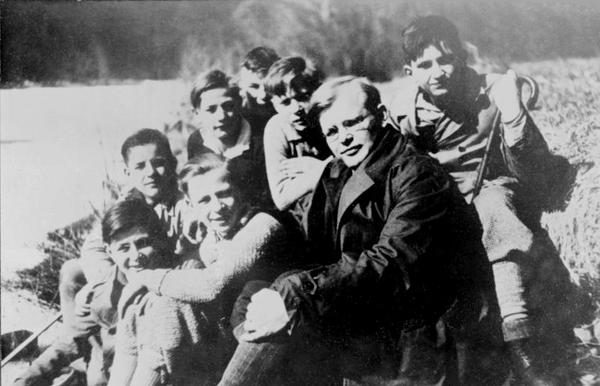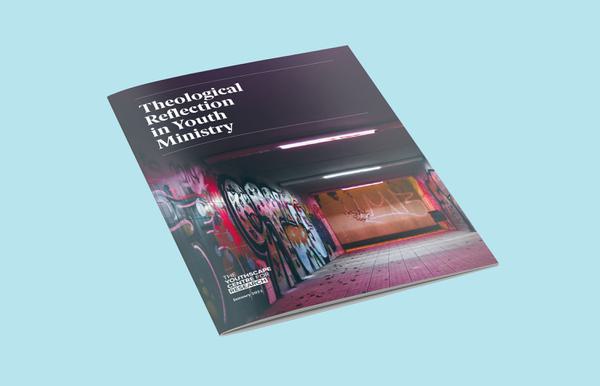Covid-19 has brought major challenges for youth workers – but the story isn’t only negative. Our research suggests there were significant opportunities and discoveries too.
This article originally appeared in Vol 18 of our research quarterly The Story. It’s the findings of research conducted at the end of 2020, exploring the story of youth work in the pandemic. You can read and download The Story vol 18 here.
At the end of 2020, 350 youth workers responded to our open question:
“What opportunities in your youth work have you found due to the COVID-19 pandemic?”
Turn and face the strange
The most popular response was that the pandemic forced groups to adapt and grow in their understandings of new technologies and ways of doing youth work e.g., TikTok, Instagram, online services, online gaming (143 references). “Zoom has been brilliant!” said one youth leader (things we never thought we’d hear?). This was a time for rapid upskilling, “an opportunity to engage in ways that we never would have thought of doing before”. For some, the door to the online world was finally forced open: “We’ve been trying for a while but were always told no. However, this gave us no choice!”
97 people said that the changes resulted in enhanced group cohesion or engagement. Groups were sharing more, relationships (between young people or from leaders to young people) were going deeper: “Young people are really enthusiastic about meeting together and seeing greater levels of engagement than ever before.” Distance has its benefits for some: “Some find it easier to be honest because there’s no-one else actually there in the room with them.” Alongside this, many people told us that there had been more time for 1-1s (e.g., walks, calls, checking up on individuals more) and small groups (84 references). “I felt we got to know our youth a lot more and went a lot deeper with them during the lockdown months.”
With greater engagement and cohesion came references to an increase in spiritual depth and discipleship – e.g. more engagement with prayer or Bible study (58). “Young people have been more open to praying and Holy Spirit on Zoom, which has been super fun!” Another said: “Sharing prayer needs together has felt significant, too: this didn’t happen before Covid.” Sometimes engagement, intimacy and spiritual depth all came together: “We have prayed more. Running just our in-house youth Bible group we’ve seen unexpected growth with some youth club teenagers joining. We’ve planned more and seen amazing new leaders emerge. We have opportunities to set up mentoring. We’re excited about the future.”
Time to rethink
60 youth leaders said that the pandemic was an opportunity to really evaluate what the group did and why. With familiar forms of youth work now unavailable, it was a chance to reflect, to go back to basics and adjust the ministry to people’s needs, perhaps reaching out to those previously missed and doing so in ways previously unexplored. “It has allowed a chance to stop and totally reassess all that we are doing and take an extended break from the constancy of programming that can make it difficult to reassess.” This was sometimes painful but insightful: “We moved our services online so easily. That’s not right is it? It shouldn’t have been so easy to capture what we do and put into a video. It’s highlighted the opportunity of the church needing to go deeper than running services.” Covid was a “chance to stop things that we maybe should have stopped a while ago” and “although a horrible, shared experience... (it) has meant a great opportunity to reflect together and listen to each other’s stories and learn together”.
53 said the changes meant they were now reaching a wider group of individuals, e.g., those living further away. There was overlap here with the 48 who said online youth work was more accessible and easier to fit in with young people’s schedules. It was also often a superior form of gathering for those with additional needs or more introverted personality types. Where some usually struggled with in-person meetings, they now thrived in online settings: “Young people on the edges, particularly those on the autistic spectrum, have really flourished in online youth work.”
"Some youth workers weren’t able to try online models until they had no choice. Will the Church at large still be open to that kind of innovation once ‘normal’ life creeps back in?"
Some youth workers (36) said they now had improved relationships with parents and families, and a number felt that online youth work has empowered young people to take
the lead (34) – particularly where they became more involved in online services. It wasn’t all good news of course, 25 said opportunities had been few or non-existent: “most things we’ve experimented with haven’t worked”.
18 leaders said the changes meant they had more time and resources. They were less stretched, and so were able to focus on different things, such as team training, study, or just having more time to plan. Some felt online youth work was actually better than in- person meetings (13), and ten said that working outside (whether for walks or larger gatherings like ‘forest church’) had proven beneficial: “Makes me wonder if perhaps the church building itself is such a barrier to young people attending church”. Finally, nine said they’d had opportunities for working with local schools.
What does this mean?
There’s encouraging news here. There were 239 references to an increase in depth during 2020 – be that growing engagement (97), more time for 1-1’s and small groups (84), or more time with the Bible and prayer (58)[1]. Covid has exposed a capacity to adapt, and with that the possibility that change can bring about growth, not merely survival. Positive things have emerged through this disruption, that probably wouldn’t have done otherwise. Of course, there hasn’t been one overriding narrative for all youth workers – we know there have been enormous challenges and many have really struggled. The survey also raises new questions. Why did some groups flourish? The pandemic forced adaptation, but were some youth workers in a better context or position to ride that wave?
Perhaps more importantly, if a new capacity has been discovered, it will need to be cultivated in order to endure. Some youth workers weren’t able to try online models until they had no choice. Will the Church at large still be open to that kind of innovation once ‘normal’ life creeps back in? If disruption is a catalyst for growth, perhaps youth work – and the structures that support it – will need to learn to invite disruption and change, even when we’re not in a pandemic.
[1] Some of these were mentioned by the same people, so it is not necessarily the case that this equates to 239 people.









